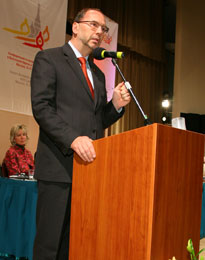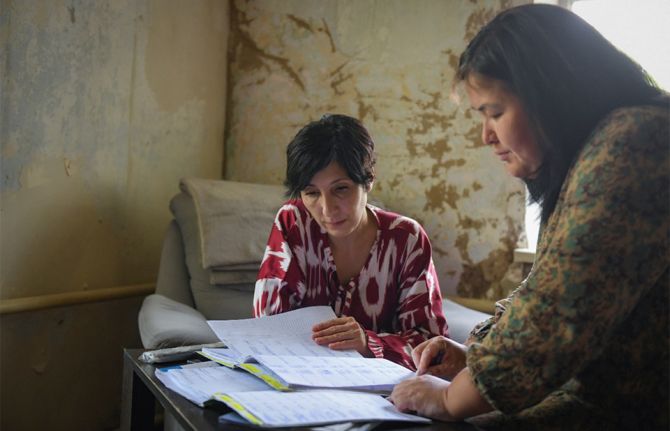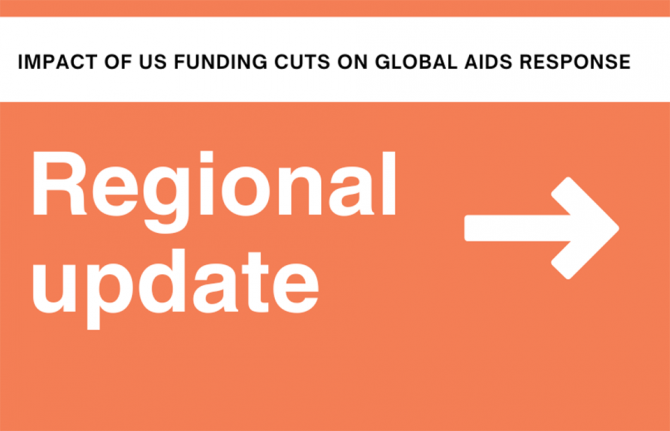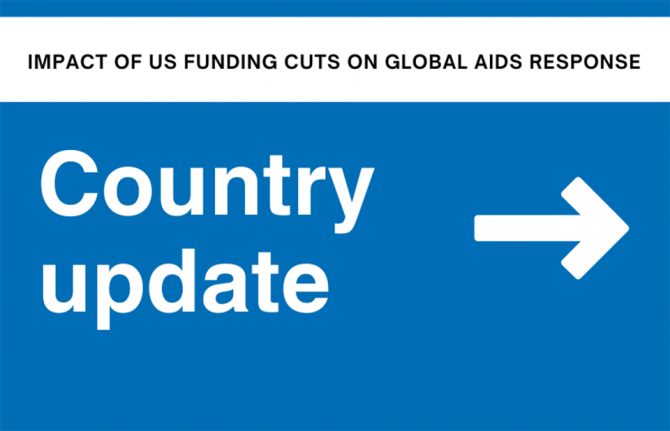
Feature Story
Eastern Europe and Central Asia are facing the challenge
16 May 2006
16 May 2006 16 May 2006
Under the theme “facing the challenge”, the first Eastern European and Central Asian AIDS conference (EECCAAC) welcomed around 1500 participants in Moscow from 15 to 17 May. This first regional conference provided an important forum for political leaders, scientists and researchers, people living with HIV and representatives from civil society to take stock of the AIDS response in the region. The EECAAC will be held every two years, and will replace the annual Russian National AIDS Conference in Suzdal.
During the last decade, the countries of Eastern Europe and Central Asia have experienced one of the world’s fastest growing HIV epidemics. By the end of 2005, more than 1.6 million people were already living with HIV in the region and around 75% of the reported HIV infections between 2000 and 2004 were in people under 30. The escalating epidemic threatens to accelerate the demographic crisis, seriously impact the workforce and national security, and put a heavy burden on the already strained health sector in the region.
This conference is being held in light of recent expanding national health spending in the most affected countries of the region. Domestic spending on AIDS in Russia is slated to increase by 20 times in 2006 to over US$100 million. In 2005, Russian Federation President Vladimir Putin established HIV prevention as a national priority.
“AIDS is one of the greatest challenges facing Eastern Europe and Central Asia today,” said Dr. Peter Piot, Executive Director of UNAIDS, during his keynote address at the conference. “Fear and stigma are truly the best friends of HIV. To get ahead of the epidemic, stigma and discrimination must be tackled head-on, and HIV prevention and treatment services must be urgently scaled up.”
The conference programme is divided into three parts: Leadership, Science and Community. The Leadership programme will focus on political, social, business and media leadership necessary to stem the epidemic. The scientific programme will bring together clinicians and researchers to provide critical insight into the various aspects of addressing HIV in the region (ranging from epidemiological surveillance to clinical treatment). The community programme will highlight the response of AIDS service organizations, NGOs and people living with HIV and provide a forum for exchange of knowledge and experience.
The expected outcomes of the conference are enhanced political leadership and commitment, increased technical capacity building, and partnerships with civil society and people living with HIV. The conference will set the stage for three major events on the global AIDS response: the High Level Meeting on AIDS in New York, June 2006; the G8 Summit in Saint Petersburg, July 2006; and the 16th International AIDS Conference in Toronto, August 2006.
The Conference Organizing Committee is co-chaired by Dr. G.G. Onishenko, Head of the Federal Service for Supervision of Consumers Protection and Welfare, Dr. Peter Piot, Executive Director of UNAIDS, and Craig McClure, President of the International AIDS Society. The committee is composed of international organizations and representatives of Russia and other CIS countries.
Related Links
Photo Gallery
Speech by UNAIDS Executive Director Dr Peter Piot
Speech by Prof Lars O. Kallings, Special Envoy of the Secretary General for HIV/AIDS in Eastern Europe and Central Asia (ru)



